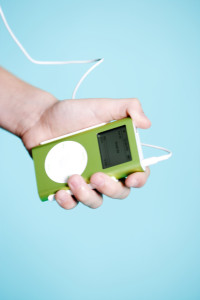A Guide to Coping with Urges
- Coping Tips
- Strategy 1: The 15-Minute Rule
- Strategy 2: Ride the Wave
- Strategy 3: Keep and review a log.
- Strategy 4: Progressive Muscle Relaxation
- Strategy 5: Talking to someone can be very helpful when you are having an intense urge to self-injure.
- Strategy 6: Do a creative activity.
- Strategy 7: Listen to music.
- Strategy 8: Exercise intensely to raise your heart rate
- Strategy 9: Play or cuddle with a pet.
“How long should you try? Until.”
– Jim Rohn
In this section of the website, we share a number of helpful coping strategies that have been found to be useful by others struggling with self-injury. Often, recovery comes down to trying to cope moment-to-moment with the urges to self-injure, the day-to-day struggles with difficult emotions, as well as improving overall wellbeing in our lives. None of this is easy.
Many times you may feel very alone in this struggle.
But, a central message of this website is that: You are NOT alone.
The strategies we present are taken from individuals, like you, who struggled with self-injury and who overcame it.
Not all the suggestions will fit for you and that’s okay. It can help though to choose and try the ones that feel right to you. At the bottom of the page, we also provide a number of additional resources you can use.
 When you feel the urge to self-injure, instead of giving into the urge immediately, tell yourself that you will wait 15 minutes and set a timer.
When you feel the urge to self-injure, instead of giving into the urge immediately, tell yourself that you will wait 15 minutes and set a timer.
During those 15 minutes try some of the coping techniques listed here.
After the time is up, how do you feel?
Has the urge diminished?
Is it gone completely?
 When coping with urges it can be helpful to become aware of how the urges start out and then become increasingly intense and, if resisted, they then decrease in intensity – just like a wave.
When coping with urges it can be helpful to become aware of how the urges start out and then become increasingly intense and, if resisted, they then decrease in intensity – just like a wave.
Many therapies for self-injury focus on learning techniques (such as those on this website), including: breathing, relaxation, and mindfulness to help you to “ride the wave” of these urges. This way, you can learn that if you can ride it out it will decrease and pass. This is why reading and thinking about the times when you have NOT acted on the urge can be very helpful. It is a good idea to practice mindful breathing and the relaxation and use them as tools to help you resist the urge and “ride the wave”.
Caroline Kettlewell, in her story of recovery from self-injury, stated: “I stopped cutting because I always could have stopped cutting; that’s the plain and inelegant truth. No matter how compelling the urge, the act itself was always a choice. I had no power over the urge, but the act itself was always a choice. I had no power over the flood tide of emotions that drove me to that brink, but I had the power to decide whether or not to step over. Eventually I decided not to.”
Caroline Kettlewell, Skin Game
And think about times you wanted to self-injure but didn’t…
 It can be very helpful to keep a log of the times you did not self-injure even though you felt the urge.
It can be very helpful to keep a log of the times you did not self-injure even though you felt the urge.
This strategy requires that when you have the urge to self-injure, you look at your log and think about the times you had urges as strong as or even stronger than the urge you have now and you DID NOT ACT ON IT.
Think about how you have resisted the urge before and you can again.
The urge to self-injure can be powerful, but everyone has experienced at least one time when they felt that urge but did not self-injure (even if it was because you were surrounded by people and could not find a way to be alone).
Keep a record of these times. To do this, list the urge you felt, what brought it on, and the reasons why you did not self-injure. Was there something in the environment that stopped you? Was it something within you? Perhaps something you did instead? A combination of any number of these?
Recognize these times and give yourself a pat on the back.
Remember: you can resist the urge and you have in the past.
 Slowly relaxing different parts of your body can be very helpful when resisting an urge to hurt yourself. People who have self-injured often say that this type of activity can be very helpful in resisting urges and feeling better.
Slowly relaxing different parts of your body can be very helpful when resisting an urge to hurt yourself. People who have self-injured often say that this type of activity can be very helpful in resisting urges and feeling better.
We are developing an audio file you can download and play from your phone, iPod, MP3 player or computer whenever you have an urge or need to relax. Please check back soon.
In the meantime, click here for files you can download that walk you through some of these types of relaxation exercises.
 This can be done in three ways:
This can be done in three ways:
1. Sharing your current urge to self-injure with another person and in order to not act on it. However, this may be very difficult and you may not have told anyone about your self-injury.
In that case, you can still reach out to someone and talk to him/her about your intense and difficult emotions that are making you want to self-injure even if you do not share your self-injury or your urge.
2. If it is too difficult to share these intense emotions, you can still reach out to someone and talk to him/her. To distract yourself from your emotions and urges you can talk about other things.
If you can’t reach the first person you call, try someone else.
It may be helpful to make a list of people who you can call close by
to remind you that there are others you can call.
3. If there is no one you can call, you can and should also go online to connect with others. For instance, you can go on Facebook to talk to a friend or relative who is online. You can also try different websites. If you go to a website about self-injury, it is important to recognize that some websites about self-injury may have triggering content. However, there are some great websites which can be helpful. For instance, Recover Your Life provides people who struggle with self-injury with a way to connect with others, including a live chatroom, available at certain times in the day, and a very active message board. It may also be helpful to find a local helpline (e.g., Kids Help Phone, Crisis Line) that you can call when you’re upset.
 You can sing, play an instrument, sketch, paint, sculpt, etc.
You can sing, play an instrument, sketch, paint, sculpt, etc.
Some individuals say that being able to express their intense emotions through a creative outlet can be helpful.
Others find that a creative activity can distract or is so involving that it helps to not act on the urge to self-injure.
But, avoid triggering music that you know will worsen mood or that remind you about self-injury.
Listening to music, often played loudly, can provide some relief.
Also, many people find that dancing vigorously to the music can be especially helpful.
 You can run, jump, climb stairs, cycle, walk uphill, dance, fast pushups, use weights (if handy), etc.
You can run, jump, climb stairs, cycle, walk uphill, dance, fast pushups, use weights (if handy), etc.
Exercising vigorously to raise your heart rate has been shown in research to be effective for some people as a way to manage urges to self-injure.
It is important that the exercise be intense and lasts until the urge passes (breathing hard and sweating). Intense exercise may therefore serve as a healthy substitution for self-injury and coping with intense, difficult emotions.
Cuddling with a pet can be very soothing and comforting. Many people find that cuddling with a favorite pet helps to avoid acting on an urge to self-injure. This can also be done together with other strategies. For example, waiting the 15-minutes and using the 15-minute wait-rule with cuddling a pet can increase the effectiveness of both strategies.




Thank you. I need this.
Thank you.
Thank you so much, I really need these.